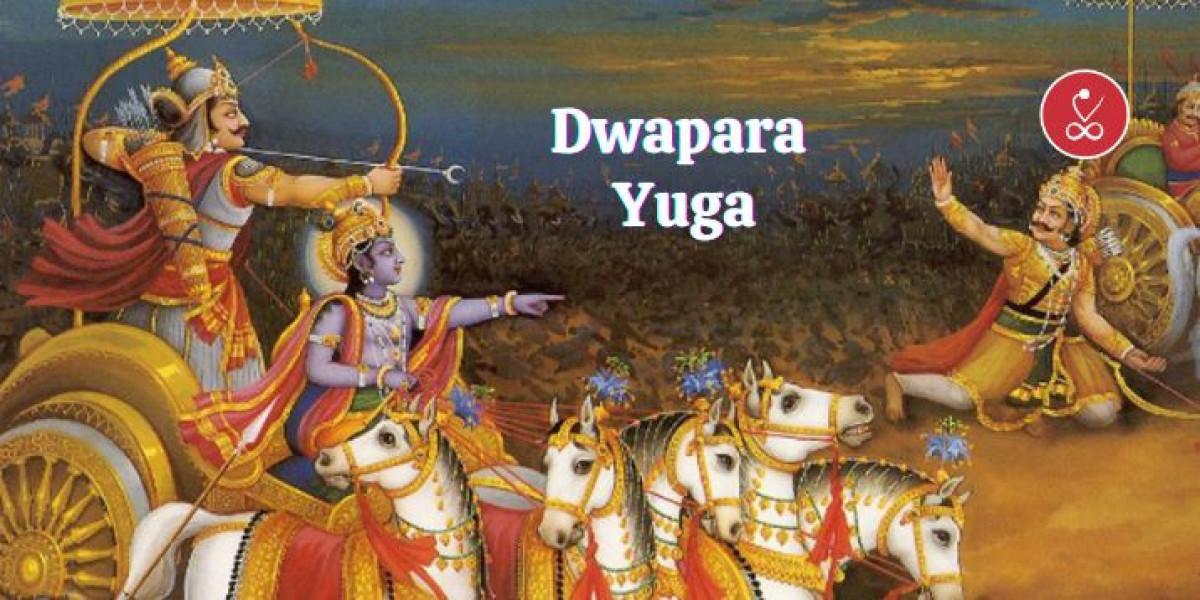In Hindu religion, Dwapara Yuga, also known as Dvapara Yuga, is the third of the four Yugas, or ages. Before Kali Yuga, it comes before Satya and Treta Yuga. The Dwapara Yuga is different from the earlier ages by a fall in spiritual and moral values.
Dwapara Yuga is marked by a further decline in righteousness and a rise in materialism and desire. This is an age of blossoming knowledge and technology, but it is also one of growing moral ambiguity and ethical conundrums. It's thought to be the moment when people start to lose their spirituality, which causes social unrest and instability.
Hindu scriptures indicate that the Dwapara Yuga is thought to have lasted for 864,000 years. It is thought that during this period, the epic Mahabharata's events, including the famous Kurukshetra War, happened.
In general, Dwapara Yuga is a period in Hindu cosmology's cyclical nature of time where moral and spiritual values keep decreasing until they reach Kali Yuga, the darkest period.
The Hindu universe is divided into four Yugas, or ages. They are as follows:
- Satya Yuga, known as the Age of Truth or Krita Yuga: Of the four Yugas, it is the first and most virtue-filled, defined by spirituality, truth, and righteousness. It's thought to be a perfect era in which God and humanity live peacefully.
- Treta Yuga: Treta Yuga, which comes after Satya Yuga, stands out from the preceding age by a slight drop in spirituality and a decrease in righteousness. During this time, rituals and sacrifices get more intricate.
- Dwapara Yuga: In place of Treta Yuga, Dwapara Yuga individuals further decline in ethics and spirituality. While moral and ethical standards decline, technologies and knowledge start to flourish.
- Kali Yuga: The final and most harmful of the four Yugas is called Kali Yuga. It is marked by a general moral and spiritual decline as well as a high level of dishonesty, greed, and selfishness in society. Hindu scriptures define the Kali Yuga as the age that humanity is currently living in.
Vishnu Avatar in Dwapar Yuga
Lord Vishnu’s avatar is believed to have taken on the form of Lord Krishna, one of Hinduism's most worshipped deities, during the Dwapara Yuga. Hindu texts like the Mahabharata, the Vishnu Purana, and the Bhagavad Gita all mention Lord Krishna's avatar.
The significance of Lord Krishna's avatar comes from his vital part in the story of the Mahabharata, a major Hindu epic. During the Kurukshetra War, he guided and directed the Pandava prince Arjuna in his chariot and gave him spiritual lessons from the Bhagavad Gita. Texts like the Bhagavata Purana provide in-depth descriptions of Lord Krishna's divine plays, or leelas, representing him as a mischievous and kind deity who teaches his devotees through divine actions.
It is believed that Lord Krishna's birth during the Dwapara Yuga was an act of faith meant to protect the righteous and restore dharma. Millions of followers are still motivated by his teachings and actions, which are valued as a source of wisdom and spiritual direction.














